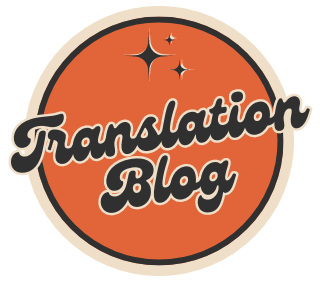Marketing is no longer about educated guesses or broad-stroke assumptions. In today’s digital-first world, success depends on how well you understand your audience. The brands that consistently outperform their competitors aren’t just more creative – they’re more precise. They know who their customers are, what drives their decisions, and how to engage them in ways that feel personal.
For decades, audience research relied on traditional methods like surveys, focus groups, and third-party data. While these approaches provided useful insights, they were often slow, expensive, and riddled with inaccuracies. Human biases, outdated data, and limited sample sizes made it difficult to get a true, real-time picture of consumer behavior.
Now, artificial intelligence (AI) is rewriting the rules. AI-driven audience research processes vast amounts of data at speeds no human team could match. It identifies patterns, behaviors, and trends in real time, giving agencies the power to target the right people with precision. Instead of making educated guesses, marketers now have access to data-backed insights that take the guesswork out of campaign planning.

How AI Tools Process Vast Amounts of Data
One of the biggest advantages of AI in audience research is its ability to analyze and process massive datasets instantly. Traditional analytics methods rely on sampling small portions of data, which often leads to incomplete or skewed insights. AI, on the other hand, can scan through millions of data points across multiple channels, providing a holistic view of audience behavior.
AI-powered tools pull data from a variety of sources, including social media interactions, website activity, search history, customer feedback, and purchase behavior. This enables agencies to understand not just what customers do, but also why they do it.
For example, an AI system can analyze patterns in social media engagement to determine how different audience segments interact with a brand’s content. It can track which products customers view on an e-commerce site and predict their likelihood to buy based on previous behavior. It can even detect seasonal buying trends and help agencies anticipate demand spikes before they happen.
Another game-changing aspect of AI is its ability to process unstructured data. Unlike traditional analytics, which rely on structured datasets, AI can interpret images, videos, voice recordings, and text-based content like customer reviews and comments. This means agencies can extract insights from a wider range of customer interactions, leading to richer, more accurate audience profiles.
Why AI Improves Accuracy in Targeting and Messaging
One of the biggest challenges in marketing is ensuring that the right message reaches the right person at the right time. Even the most well-crafted campaigns fail if they target the wrong audience or deliver irrelevant messaging.
AI dramatically improves targeting accuracy by removing human biases and identifying precise behavioral patterns. Instead of relying on outdated demographic segmentation, AI clusters audiences based on real-time behaviors, interests, and intent.
For example, AI can distinguish between impulse buyers and cautious researchers, frequent shoppers and one-time customers, or brand-loyal advocates and price-sensitive deal seekers. This allows marketers to deliver hyper-personalized content that speaks directly to each segment’s needs and motivations.
Another area where AI enhances accuracy is in predictive analytics. AI doesn’t just analyze past behavior – it forecasts future actions based on historical patterns. If a customer has been browsing a certain category of products, AI can predict when they’re likely to make a purchase and trigger automated, personalized outreach at the perfect moment.
This level of predictive targeting also helps agencies optimize their ad spend and marketing budgets. Instead of running broad campaigns that waste money on uninterested audiences, AI ensures that every marketing dollar is spent on high-intent customers who are most likely to convert.
Tools Like Elsa That Empower Agencies to Understand Their Audiences Better
Not long ago, AI-powered audience research was a luxury that only the biggest companies with data science teams could afford. How to create a marketing strategy? Thanks to AI-driven platforms like Elsa, even small and mid-sized agencies can now access enterprise-level audience insights without the need for complex data infrastructure.
Elsa is designed to help agencies unlock deep audience insights in real time. It integrates seamlessly with marketing tools and pulls data from multiple sources to provide a comprehensive view of customer behavior. Agencies that use Elsa gain access to:
- Automated audience segmentation, which clusters customers based on their actual behaviors rather than generic demographics.
- Real-time trend detection, allowing marketers to adapt their strategies before consumer interests shift.
- Predictive insights, which help agencies anticipate what their audience will do next and optimize campaigns accordingly.
- Personalized messaging recommendations, ensuring that marketing content resonates with different audience segments.
By integrating tools like Elsa into their workflow, agencies can eliminate the guesswork from audience research and build strategies based on hard data rather than assumptions. This leads to higher engagement rates, better conversion rates, and more efficient use of marketing resources.
Steps to Adopt AI for Audience Research Today
For agencies looking to leverage AI-driven audience research, the transition doesn’t have to be overwhelming. The key is starting small and integrating AI gradually into existing processes.
The first step is to assess current audience research methods. Identifying the gaps in traditional research approaches will clarify where AI can provide the most value. Whether it’s improving segmentation, enhancing targeting accuracy, or predicting trends, AI can be applied in stages to improve different aspects of marketing.
Next, agencies should choose the right AI-powered tools. Not all AI solutions are created equal, so it’s essential to select a platform that aligns with specific business needs. Tools like Elsa offer plug-and-play AI integration, making it easy for agencies to adopt without requiring advanced technical expertise.
Once an AI tool is in place, agencies should test and refine their approach. AI models become more accurate over time as they learn from new data. Regularly analyzing insights, adjusting targeting strategies, and fine-tuning messaging based on AI-driven recommendations will ensure continued improvement.
Finally, agencies should train their teams to work alongside AI. AI is not here to replace marketers – it’s here to enhance their capabilities. When combined with human creativity and strategic thinking, AI-powered insights create a powerful formula for marketing success.
The Future of Audience Research Belongs to AI
The days of relying on static, outdated audience research are over. In a digital landscape where consumer behaviors shift rapidly, agencies that fail to adapt risk falling behind. AI-powered audience research provides a competitive edge, enabling marketers to make data-driven decisions with unmatched speed and precision.
With AI tools like Elsa, agencies can unlock deeper audience insights, predict consumer trends before they happen, and deliver highly personalized messaging at scale. The result is more effective campaigns, increased engagement, and stronger ROI.
The shift toward AI isn’t just an upgrade – it’s a necessity for agencies that want to stay ahead of the curve. The brands that invest in AI-driven audience research today will be the ones that lead the industry tomorrow.
For agencies ready to crack the code on smarter marketing, the time to adopt AI is now.

